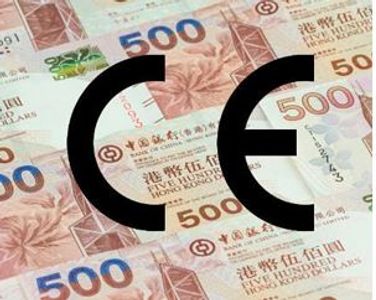CE Certification: Gateway to the European Market
 Amos Beau
29 May, 2025
9 mins read
53
Amos Beau
29 May, 2025
9 mins read
53

Introduction
In the global marketplace, ensuring product safety, quality, and compliance with regulatory standards is essential for businesses aiming to access diverse markets. The CE certification, marked by the distinctive "CE" logo, is a mandatory conformity mark for products sold within the European Economic Area (EEA), which includes the European Union, Iceland, Liechtenstein, and Norway. Derived from the French term Conformité Européenne (European Conformity), CE certification indicates that a product complies with EU health, safety, and environmental protection standards. It is a critical requirement for manufacturers, importers, and distributors seeking to enter or operate within the EEA. This article explores CE certification through four key subtopics: its purpose and scope, key requirements, benefits for businesses, and the certification process, offering a comprehensive understanding of its role in facilitating trade and ensuring consumer safety.
Purpose and Scope of CE Certification
The primary purpose of CE certification is to ensure that products placed on the EEA market meet stringent safety, health, and environmental standards, thereby protecting consumers and facilitating free trade across member states. Introduced under the EU’s New Approach Directives in the 1980s, the CE mark eliminates technical barriers to trade by harmonizing standards, allowing products to move freely within the EEA without additional national requirements.
The scope of CE certification applies to a wide range of products, including electrical equipment, machinery, medical devices, toys, personal protective equipment (PPE), and construction products, among others. It covers approximately 20 product categories governed by specific EU directives or regulations, such as the Machinery Directive (2006/42/EC), the Low Voltage Directive (2014/35/EU), and the Medical Devices Regulation (2017/745). Not all products require CE marking; it is mandatory only for those falling under the relevant directives or regulations. For example, food, cosmetics, and certain chemicals are exempt, as they are governed by other EU regulations.
The CE mark signifies that the manufacturer has assessed the product’s compliance with applicable EU legislation and takes responsibility for its safety and performance. This fosters consumer trust and ensures a level playing field for businesses across the EEA.
Key Requirements of CE Certification
Achieving CE certification requires manufacturers to comply with the technical and administrative requirements outlined in the relevant EU directives or regulations. Key requirements include:
- Conformity Assessment: Manufacturers must evaluate their product against the essential requirements of the applicable directive(s), which may involve testing for safety, electromagnetic compatibility, or environmental impact, depending on the product type.
- Technical Documentation: A comprehensive technical file must be compiled, detailing the product’s design, manufacturing process, and compliance with relevant standards. This includes risk assessments, test reports, and user manuals.
- Declaration of Conformity (DoC): Manufacturers must issue a DoC, a legal document stating that the product meets all applicable EU requirements. The DoC must include details about the product, manufacturer, and relevant directives.
- Affixing the CE Mark: Once compliance is verified, the CE mark must be visibly, legibly, and indelibly affixed to the product or its packaging, accompanied by any required warnings or instructions.
For high-risk products, such as medical devices or gas appliances, a Notified Body—an independent organization designated by the EU—must be involved to verify compliance. For lower-risk products, manufacturers may self-certify after conducting the necessary assessments. Compliance with harmonized standards (e.g., EN standards) simplifies the process, as these are presumed to meet directive requirements.
Benefits of CE Certification
certificación ce offers significant advantages for businesses, consumers, and regulators. Key benefits include:
- Market Access: The CE mark is a passport to the EEA market, allowing products to be sold in 30 countries without additional national certifications, reducing costs and administrative burdens.
- Consumer Safety and Trust: By ensuring compliance with rigorous EU standards, CE certification protects consumers from unsafe products, enhancing brand credibility and consumer confidence.
- Competitive Advantage: Certified products stand out in the marketplace, as the CE mark is recognized globally as a symbol of quality and safety, appealing to both EEA and non-EEA customers.
- Legal Compliance: CE certification ensures adherence to EU regulations, minimizing the risk of legal penalties, product recalls, or market withdrawal due to non-compliance.
Additionally, the certification process encourages manufacturers to adopt robust quality control and risk management practices, leading to improved product reliability and operational efficiency. For businesses aiming to expand internationally, CE certification serves as a stepping stone to other markets that recognize or align with EU standards.
The Certification Process
Obtaining CE certification involves a structured process that varies depending on the product and applicable directive(s). The key steps include:
- Identify Applicable Directives: Manufacturers must determine which EU directives or regulations apply to their product based on its category and intended use. Multiple directives may apply to a single product (e.g., a machine with electrical components).
- Conduct Conformity Assessment: The product is assessed for compliance through testing, risk analysis, and adherence to harmonized standards. For high-risk products, a Notified Body may conduct independent testing or audits.
- Prepare Technical Documentation: A technical file is compiled, including design specifications, test results, risk assessments, and user instructions, to demonstrate compliance.
- Issue Declaration of Conformity and Affix CE Mark: After verifying compliance, the manufacturer issues the DoC and affixes the CE mark to the product, ensuring it meets labeling requirements.
For self-certification, manufacturers take full responsibility for compliance, while Notified Body involvement is mandatory for certain products. The technical file must be retained for at least 10 years (or as specified by the directive) and made available to authorities upon request. Post-certification, manufacturers must ensure ongoing compliance through quality control and market surveillance, as EU authorities may conduct inspections to verify adherence.
Conclusion
CE certification is a vital requirement for businesses seeking to access the lucrative EEA market while ensuring product safety and quality. By adhering to EU directives and regulations, manufacturers demonstrate their commitment to consumer protection and regulatory compliance, fostering trust and competitiveness. The certification process, though rigorous, offers substantial benefits, including market access, legal compliance, and enhanced brand reputation. As global trade continues to evolve, CE certification remains a cornerstone of product conformity, enabling businesses to navigate the complexities of the European market with confidence. For manufacturers, importers, and distributors, achieving and maintaining CE certification is not just a regulatory obligation but a strategic investment in quality, safety, and global market success.
Written By:
Amos Beau



Hotels at your convenience
Now choose your stay according to your preference. From finding a place for your dream destination or a mere weekend getaway to business accommodations or brief stay, we have got you covered. Explore hotels as per your mood.


